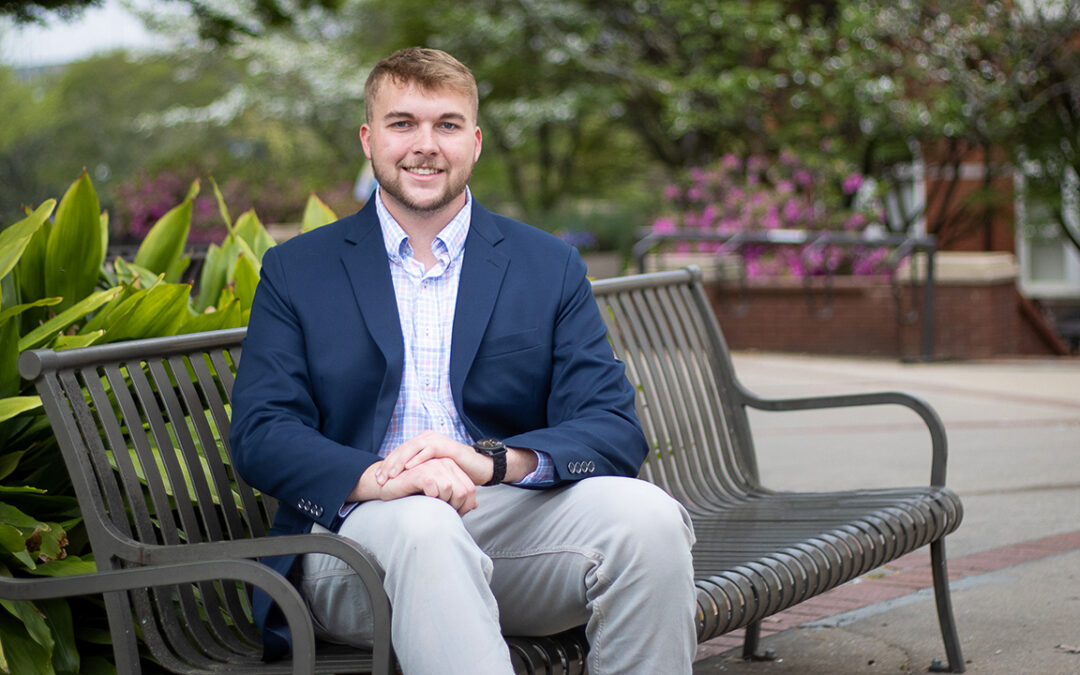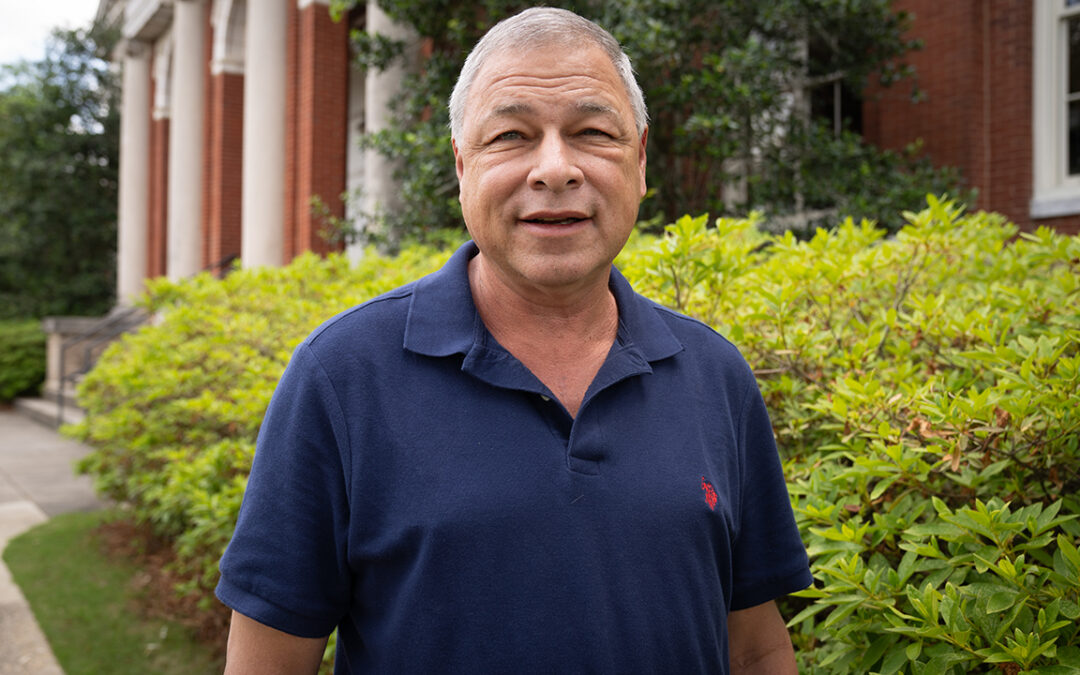
An infestation of cogongrass in an Alabama pine plantation. Cogongrass, the seventh most invasive plant species in the world, is being studied by Auburn researchers Stephen Enloe and Nancy Loewenstein.
AUBURN, Ala.— Auburn University College of Agriculture associate professor and Extension specialist Stephen Enloe, along with Nancy Loewenstein, School of Forestry and Wildlife Sciences research fellow, published a new study that reports significant progress in the fight against cogongrass. Cogongrass is ranked as the seventh worst invasive plant species worldwide and is both a significant economic and ecological threat to much of Alabama. These results of this study offer land managers several viable options in controlling the troublesome weed.
Cogongrass is an aggressive, highly flammable, nonnative grass that invades and can quickly overtake forests and other uncultivated areas. It spreads by seeds and by underground rhizomes and forms dense stands that choke out native plants. The cogongrass rhizome system can account for up to 80 percent of the weed’s biomass, making it difficult to eradicate.
“No research has successfully demonstrated eradication of an infestation of cogongrass before,” Enloe said. “So we are very excited that we know we can do it, even on some of the most severe infestations.”
The three-year study, conducted at Tillmans Corner, and Bayou La Batre, Alabama, used herbicide treatments of glyphosate, imazapyr and a mixture of both. The combinations of herbicide treatments and application timing produced nine treatments in addition to a nontreated control.
Applications of the herbicides were made in May, August and October of each year. At one site, the May and October glyphosate treatment achieved eradication in 18 months, while the same treatment was successful after 36 months at the second site.
Rhizome depth, rhizome biomass, shoot biomass, visual control and total nonstructural carbohydrate were measured as parameters of success during the study. Many of the herbicide treatment and timing combinations were successful in eradicating cogongrass populations, but the amount of time to reach eradication varied by site.
Imazapyr applications at all treatment timings were successful in eradicating cogongrass after the third year at both locations. Mixtures of glyphosate and imazapyr were successful after three years of applications for all treatment timings.
The Alabama Agricultural Experiment Station and the USDA Forest Service Southern Research Station funded the research.
For more information, contact Enloe at 334-844-8928 or Loewenstein at 334-844-1061.




